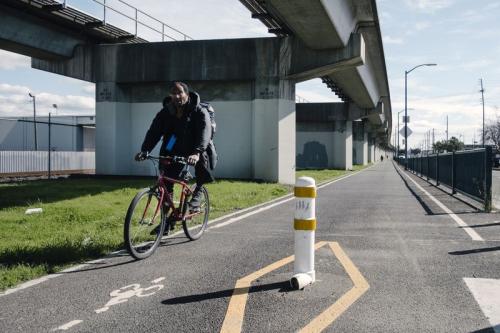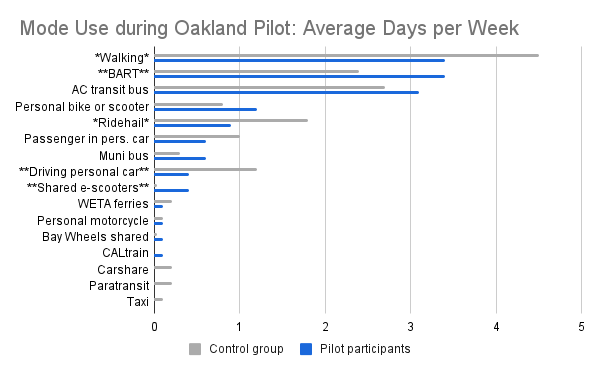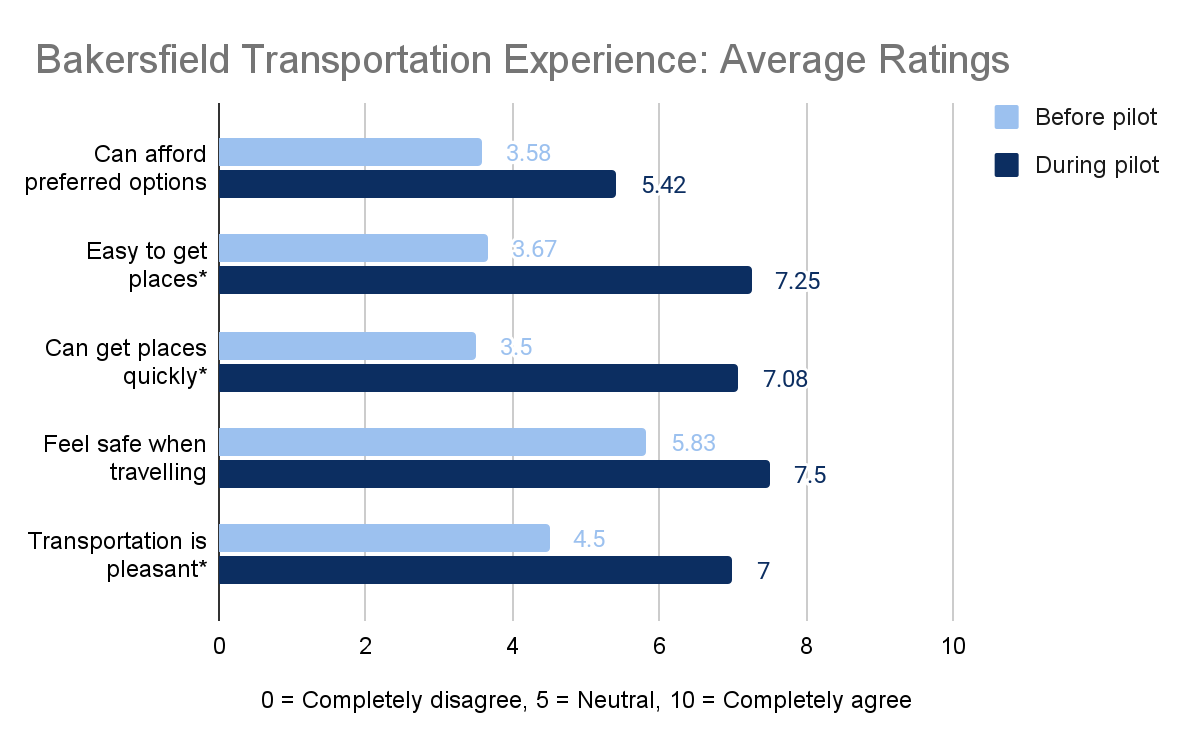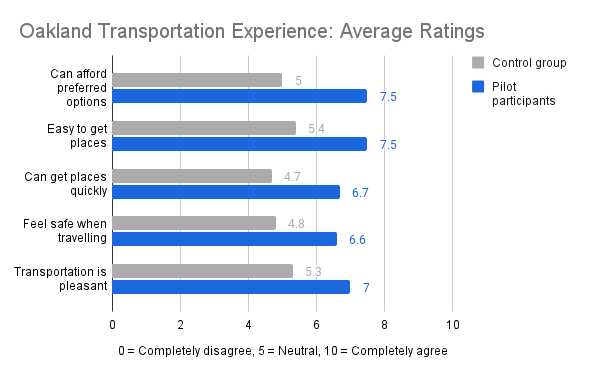How did participants use the mobility services?

In Bakersfield, participants reported using Spin e-scooters (available during the first several months of the pilot) 4 days per week on average and Spin e-bikes (introduced when scooters were removed) 5-6 days per week. Oakland participants largely used their funds to pay for rides on public transit (BART commuter rail, or AC Transit buses), which were services most were already using prior to the pilot. They also tried new mobility services. For example, most participants who used their funds to purchase ferry (86%) shared scooter (78%), and BayWheels shared bikes (60%) services did not regularly use those before the pilot.
“It [the pilot] definitely, positively affected me because before I had trouble getting to the places that I needed to be. But with the e-bike I didn't have to worry as much because I could cover more ground quicker. And it would also make sure that I wasn’t in the heat for too long. So I would still look good and not like I just ran a marathon.” –Bakersfield, 22yo Hispanic/latino man
Participants were able to get a lot of use out of the provided services despite some major challenges. In Bakersfield...(find out more about how participants used mobility services)
Did the pilots result in mode shifts?

An important objective of the evaluation research was to understand whether provided services were replacing other modes that might be less safe, efficient, or environmentally friendly.
For example, will people take the train instead of driving their car, or replace a long circuitous bus commute with more direct ride on a train or other mode? This is called mode shift.
Oakland pilot participants did report driving a personal car less compared to the control group. On the other hand, they reported using BART and shared e-scooters more, suggesting some mode shifts did occur. Mode shifts were also observed in Bakersfield, particularly lower use of ridehailing when participants had access to Spin scooters and bikes. Bus use among Bakersfield participants started high at baseline and remained high during the pilot, suggesting the intended free bus passes that were originally planned for the pilot would have been a useful addition....(Find out more about this study's mode use findings.)
Did the pilots alleviate transportation poverty?
Many participants in this study, in East Oakland and Bakersfield face transportation poverty conditions. Transportation poverty afflicts many low-income households, and can include spending large amounts of time and/or income to travel. Transportation poverty can also mean facing dangerous travel conditions, or sacrificing taking trips due to lack of available mobility options or lack of funds. Participants in both locations reported better transportation experience during the pilots in terms of the various elements of transportation poverty, including affordability, ease of access, travel time, safety, and pleasure.
Participants in car-oriented Bakersfield were youth, with an average age of 20.5 years, and 74% of pilot participants reported to have zero cars owned or leased by household members, while 16% reported one car owned or leased by household members. Furthermore, the Chart below, [Difficulty Accessing Basic Needs] shows how the baseline for Bakersfield participants was lower, but marginal improvements were shown in both pilot locations....(Find out more about this study's transportation poverty findings)


What broader impacts resulted from alleviating transport poverty?
Broader Impacts
Limited and/or short-term UBM-inspired pilots cannot be expected to repair the far-reaching negative impacts of transportation poverty that participants may have been experiencing over many years, but there were some promising findings about the potential broad benefits of UBM.
““It [the e-bike] made work a little bit better, because I had something to rely on. I didn't have to worry about either calling a ride or anything…”
A majority of participants in both pilots reported that the mobility programs improved their:
- Ability to take care of basic needs (Oakland: 86%; Bakersfield: 79%)
- Ability to get or keep a job (Oakland: 50%, or 58% when excluding NA responses; Bakersfield: 64%)
- Social relationships (Oakland: 56%; Bakersfield: 86%)
- Opportunities for recreation or exercise (Oakland: 56%; Bakersfield: 71%)
- Ability to save money (Oakland: 94%; Bakersfield: 86%)
Around one-third of participants surveyed in each city (35% in Oakland and 29% in Bakersfield) said the pilots kept them from needing to borrow money from friends or family...(Find out more about the broader impacts of the pilots observed in this study)

